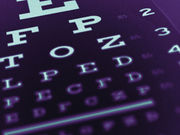Findings for midrange vision category (at legal threshold for driving)
THURSDAY, July 28, 2016 (HealthDay News) — Patients with even moderately impaired vision may face a higher risk of unemployment, poverty, and mental health problems, according to research published online July 28 in JAMA Ophthalmology.
The researchers based their findings on a previous project that examined the health of 112,314 volunteers in the United Kingdom. The average age of the volunteers was 57, and 54.5 percent were female. Less than 1 percent (0.7 percent) of the participants were blind or had severely limited vision; 22.9 percent had limited vision in one or both eyes, often despite having contacts or eyeglasses, according to the report.
Being in the midrange vision category (the legal threshold for driving) was associated with increased risk of unemployment (risk ratio [RR], 1.55), having a lower-status job (RR, 1.24), living alone (RR, 1.24), and having mental health problems (RR, 1.12). Factors associated with being in the midrange vision category included: having no educational qualifications; having a higher deprivation score; and being in a minority ethnic group.
“Our focus has mostly been on severe visual loss and treating the eye diseases that cause it,” Mary Frances Cotch, Ph.D., chief of epidemiology at the U.S. National Eye Institute in Bethesda, Md., told HealthDay. “This study is saying we probably shouldn’t wait until that time since people with mild visual loss are being affected by their condition.”
Copyright © 2016 HealthDay. All rights reserved.








